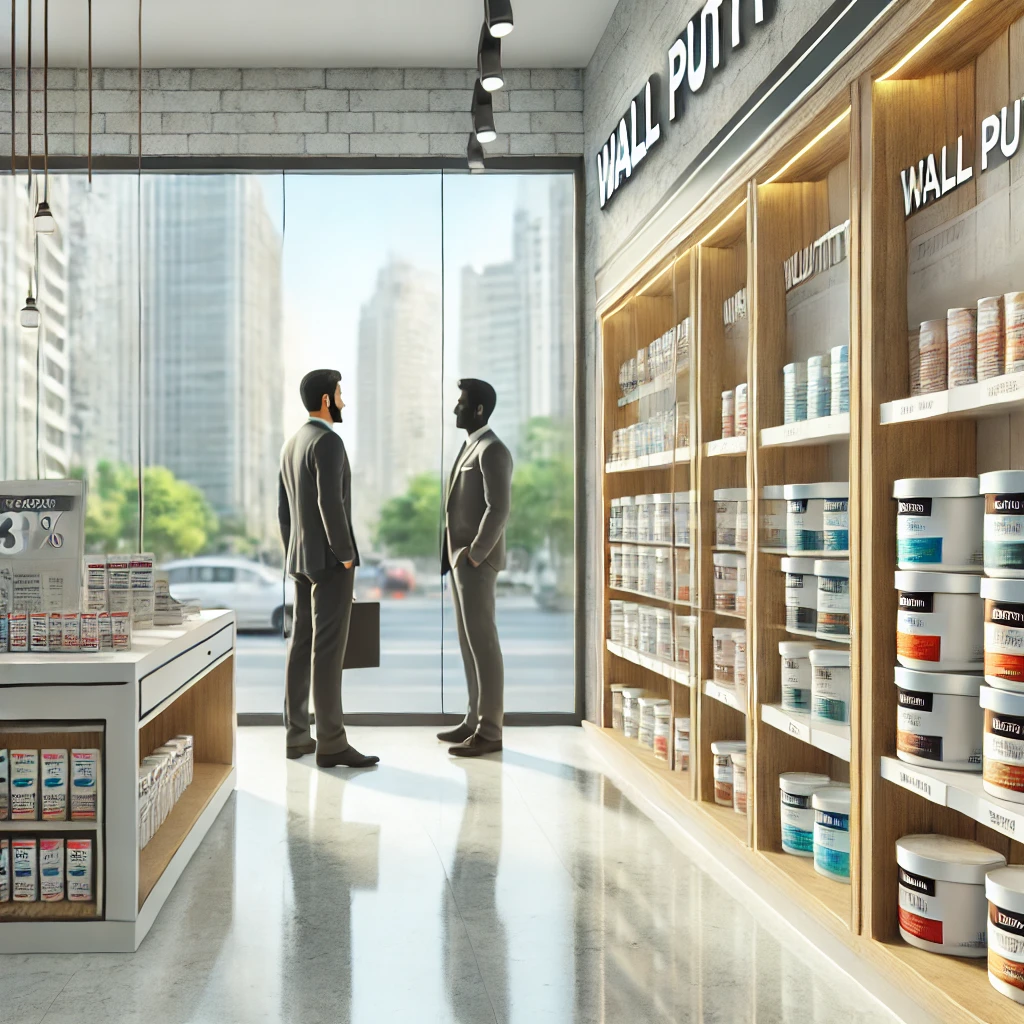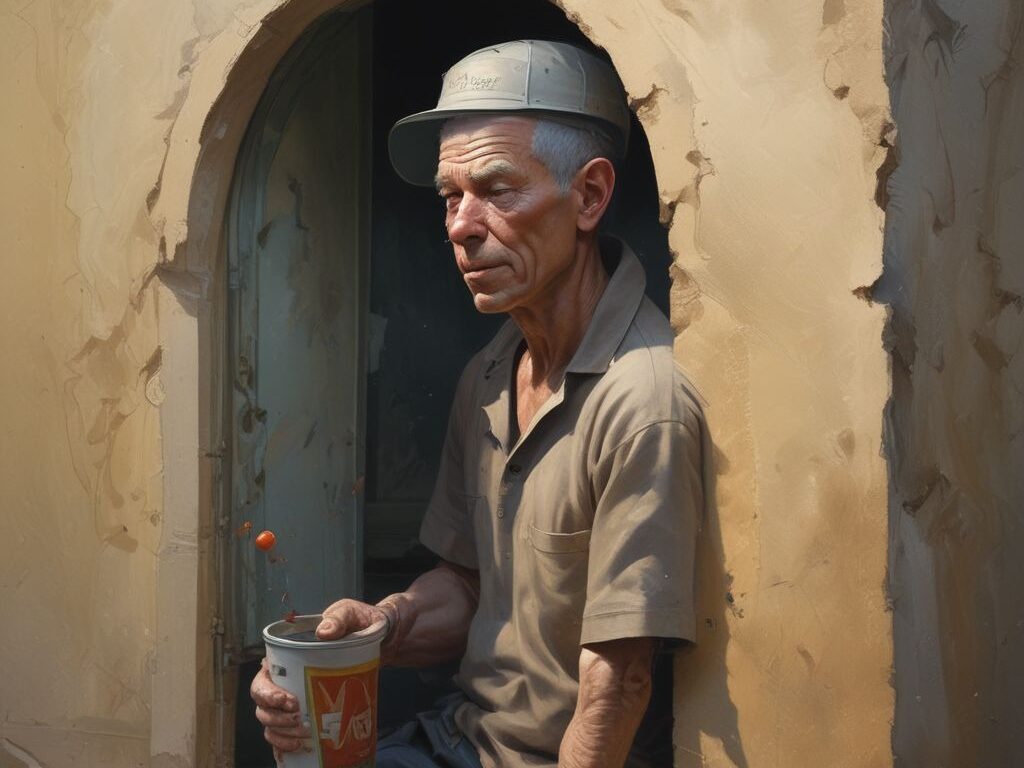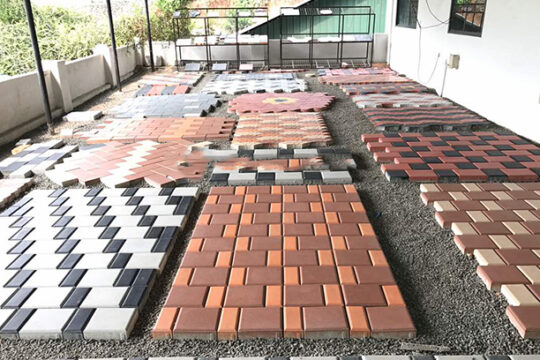Looking for top-quality Wall Putty Dealers in Mumbai? Discover trusted dealers offering premium products for smooth and durable finishes. Transform your space today!
What is wall putty, and how do you use it effectively?
You may have heard of putty if you are planning a home renovation or want to paint your walls. Wall putty is commonly used as a filler to fill gaps, cracks, holes, and other imperfections prior to wallpapering or painting. It is also used to create a smooth surface for painting or applying wallpaper.
Homeowners frequently disregard putty in favor of applying wallpaper or paint directly to the wall. However, putty is one of the most important building materials and should be used for its numerous advantages.
This blog will teach you everything you need to know about Wall Putty Dealers in Mumbai, including its significance, benefits, and applications, among other things.
What is wall putty?
Putty is a type of construction material created by combining white cement, water, polymer, additives, and fillers. The exact components of a putty can vary depending on the manufacturer’s ingredient selection and the intended application.
Putty is a pliable, dough-like substance that can be easily applied to flat surfaces. It creates a smooth and even surface that is suitable for painting or wallpapering.
There are several types of putties on the market. For example, lightweight putty is suitable for minor repairs to walls or floors, whereas heavy-duty putty is designed for large-scale installation and repair jobs.
What Is the Importance of Wall Putty Dealers in Mumbai?
Wall putty has a variety of applications, including:
1. Filling cracks
Putty is extremely useful for concealing minor flaws in walls and floors, such as gaps, cracks, dents, holes, and fractures. It helps to conceal flaws while also smoothing and leveling the underlying surface. This allows you to properly apply a coat of paint or a strip of wallpaper.
2. Leveling surfaces
An uneven surface is unsuitable for installing tiles or applying paint because it affects the final finish. Using putty, you can easily level uneven surfaces and remove any undulations, bumps, and blemishes, resulting in a smooth and level surface for painting or applying wallpaper.
3. Improving adhesion
Putty not only smoothes the surface of walls and floors, but it also improves their adhesive properties. Putty makes it easier for paint and wallpaper to adhere to any substrate.
It results in a slightly rough texture at the microscopic level. This keeps paint from peeling, flaking, or creating bubbles, resulting in a smooth and visually appealing painted surface.
4. Preventing Seepage
Some putties are also water-resistant, which helps to prevent moisture from seeping into the house’s walls. This is extremely useful in preventing structural damage to buildings located in wet and humid environments.
5. Enhancing durability
Putty also protects painted surfaces, extending their durability. It prevents chipping, cracking, and wear and tear while also extending the life of paint and wallpaper.
What are the main components of wall putty?
The following are the main components and ingredients used to make putty.
1. White Cement
White cement is the primary component of putty. It gives the putty its natural white color and inherent adhesive properties. Because regular cement lacks these superior properties, wall putty manufacturers opt for white cement instead.
2. Polymers
Polymers improve some of the properties of putty. For example, adding vinyl acetate or acrylic improves fracture resistance, induces additional flexibility, and increases the adhesive strength of the putty. For example, redispersible polymer powder (RDP) is one of the most commonly used polymers in the production of high-quality wall putty.
3. Fillers
Fillers, such as finely crushed calcium carbonate or limestone, are used in putty to improve its workability and texture. In addition, using fillers helps to achieve an evenly smooth finish on applied surfaces.
4. Additives
Putty also contains a variety of additives that focus on improving a specific property. Dispersion agents, thickeners, preservatives, and water-resistant agents are common additives used to improve the properties of putty.
Are there different types of wall putty?
Yes, there are different types of wall putty dealers in Mumbai on the market. Each type of wall putty has a distinct additive that improves certain properties.
Some of the most common types of putty available today are:
1. Acrylic-based Putty
This putty is made by mixing acrylic polymers into an acrylic base. Acrylic putty has stronger adhesive properties, is more flexible, and is water-resistant. It is a versatile putty that can be used indoors and out on wood, metal, and concrete surfaces.
2. Cement-based Putty
The most common type of putty on the market is cement-based. It is made of white cement and contains some additives and fillers as major ingredients. Cement-based putty can be used on almost all cemented surfaces, including concrete, plaster, and brick walls.
3. Gypsum-Based Putty
The main ingredient in this type of putty is gypsum powder. Gypsum-based putty stands out from others due to its brighter whiteness, excellent water resistance, and impressive surface polish. Gypsum-based putty is commonly used for interior applications, such as when installing drywall.
Conclusion
Wall putty dealers in Mumbai provide some of the most versatile and useful construction materials available today. It is mostly made by combining white cement, additives, fillers, and polymers to improve specific properties. Putty has numerous advantages, such as increased adhesion, a smoother surface finish, an aesthetically pleasing appearance, and so on. To achieve the desired results, apply putty with caution.



